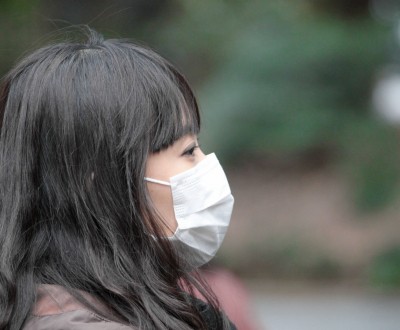Why do Japanese people wear masks
The use of sanitary / face mask in Japan: A measure against pollution and diseases
In the wake of 2009 swine flu outbreak, the world has discovered the possible use of sanitary masks in the event of a pandemic. Regarding face mask practice in Japan, medias in Western countries helped develop the recent belief that Japanese people wore face masks to protect from a possible contamination after the 2011 nuclear disaster in Fukushima Daiichi power plant. Before this incident, and especially in the 1990s, the cause for wearing masks in Japan, in particular in megalopolis such as Tokyo, was the high level of air pollution. More recently, with the outbreak of Novel Coronavirus 🦠 in the beginning of 2020, sanitary masks came back under the spotlight.
Preconceptions, clichés and dramatizations have developed about the use of face masks, which was a widespread habit in Japan and many Asian countries for quite a long time. The use of sanitary masks dates back to the 1919 influenza pandemic (or Spanish flu), that killed more than 400,000 people in Japan.
But Japanese people have several other reasons to cover their mouth and their nose.
Main reasons for wearing a face mask in Japan
Avoid spreading viruses
First, the face mask helps prevent the spreading of viruses and avoid contamination of other people. Diseases spread easily in large cities and in public transportations given the density of population: wearing a face mask cut down the transmission pathways of a cold or a flu.
Therefore, workers who are in contact with a large number of people, such as railway station employees, often wear a mask.
On the same note, the mask is also used to prevent contamination from a colleague's cough or sneeze. Studies showed that wearing a sanitary mask 😷 lowered the contagion risk by 80%.
Similarly, the mask is used to humidify air when breathing in a cold or dry atmosphere: it avoids a sore throat that could weaken the immune system.
Prevention of pollen allergies
The mask also acts as a preventive measure against allergies. As we explained in our article about hay fever in Japan, pollens are very strong and many Japanese people (up to half the population) have developed respiratory allergies. As a consequence, there is nothing more common in spring 🌸 than wearing a face mask.
Hide the lower face
Surprisingly, Japanese women (of all ages) who did not have the time, or did not bother, to put makeup on, tend to wear a mask to hide lower face. They just quickly apply some mascara and/or eyeliner to create the illusion of being fully made up. The mask is also used to hide a black head or a ugly spot that cropped up overnight!
Men, in the same way, can wear a mask if they didn’t have time to shave or are growing a beard, as facial hair is not an acceptable feature in most of the workplaces.
Maintain anonymity
The combination sanitary mask + sunglasses is also a trick celebrities widely use to conceal their identity from paparazzies.
For example, Carlos Ghosn hid his face with a sanitary mask when released from pre-trial custody on 05 March 2019, after a 108 days detention.
Sunglasses are still considered bad manners even in public spaces, so ordinary people use face masks as a sign they don’t want social interaction.
Social acceptance
In Japan, hiding a large part of the face with a sanitary mask is not a problem, even during social interactions. This is a simple mark of respect and a hygienic measure in accordance with Japanese society's customs 🛂. That's why during a trip in Japan, you will meet many people wearing sanitary masks, regardless of gender, age or season.
There are many mask manufacturers and masks are sold everywhere, especially in konbini (convenience stores) or in ¥100 shops. Mask prices vary according to their quality: they are usually made of a thick, strong fabric. The overwhelming majority of masks are white, but wacky designs do exist; we met Japanese children with a Hello Kitty, Disney, or Sailor Moon design or with vampire teeth! Some adults can even sport panties-shaped masks!
In 2020, the famous clothing brand Uniqlo put up for sale the AIRism mask made with breathable materials to help withstand summer heat in Japan and washable up to 20 times. The 3-masks set was sold ¥990 (~US$6.33).
In Japan alone, billions of sanitary masks are sold every year.
A handful of opponents
A movement of protest against the practice of wearing a face mask appeared recently, led by YouTuber Hiratsuka Masayuki who ran for candidate in the Tokyo gubernatorial election in July 2020 (and who gathered 0.15% of the votes). His campaign slogan was "Corona is just a cold."
About a handful of supporters have nonetheless gathered several times, especially in Shibuya, to protest the physical distancing measures, the stay-at-home recommendations, the sanitary state of emergency, or against mandatory vaccination, and the interest of face mask in particular, a quite unusual position in Japan.
A kind of "covid party" (called "cluster festival") was even planned to be held in the Yamanote train 🚅 line in Tokyo in August 2020, but it was nipped in the bud.


